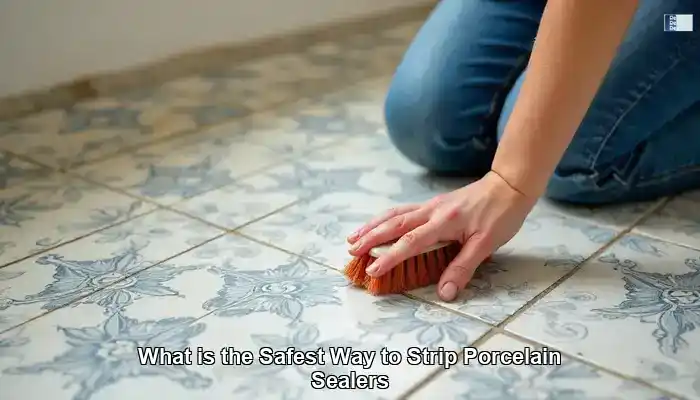
Enhance Your Knowledge of Porcelain Sealers for Optimal Maintenance Strategies
Porcelain sealers are indispensable for preserving the durability and aesthetic charm of porcelain surfaces. These sealers not only amplify the visual appeal of the material but also significantly extend its lifespan. In the UK, where porcelain is widely preferred for tiles, countertops, and decorative items, it is crucial for homeowners and professionals in the industry to grasp the varieties of sealers available. By understanding the functionality of these sealers, you can make well-informed decisions that enhance the long-term performance and sustainability of your porcelain installations, ensuring they remain both beautiful and functional for years to come.
Exploring the Various Types of Sealers: Impregnating vs. Topical for Your Porcelain Tiles
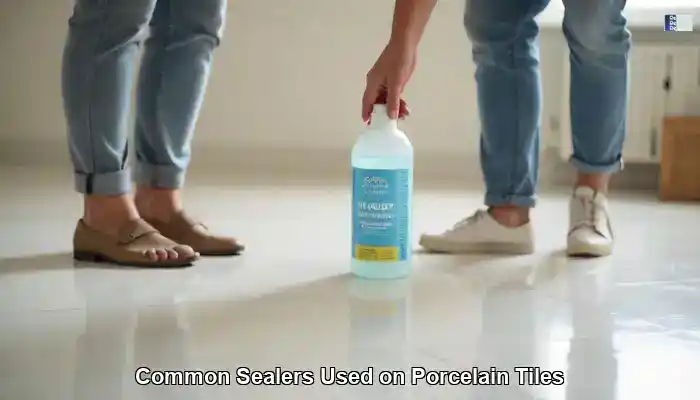
In the UK, impregnating (penetrating) sealers are the preferred choice for sealing porcelain surfaces. These sealers penetrate into the tile, providing protection from within while maintaining the inherent beauty of the porcelain. By offering exceptional resistance against moisture and stains, these sealers effectively preserve the integrity of the porcelain, making them an ideal selection for both indoor and outdoor applications. Understanding the differences between sealer types is essential for ensuring your porcelain remains in pristine condition, as using the right product can greatly enhance its performance.
Professional Recommendations: Top Products for Cleaning and Sealing Your Porcelain Tiles
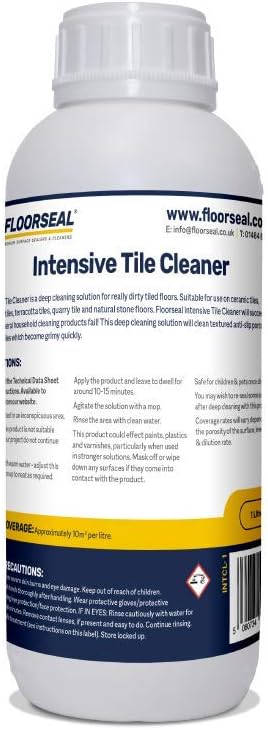
Floorseal
Intensive Tile Cleaner
|
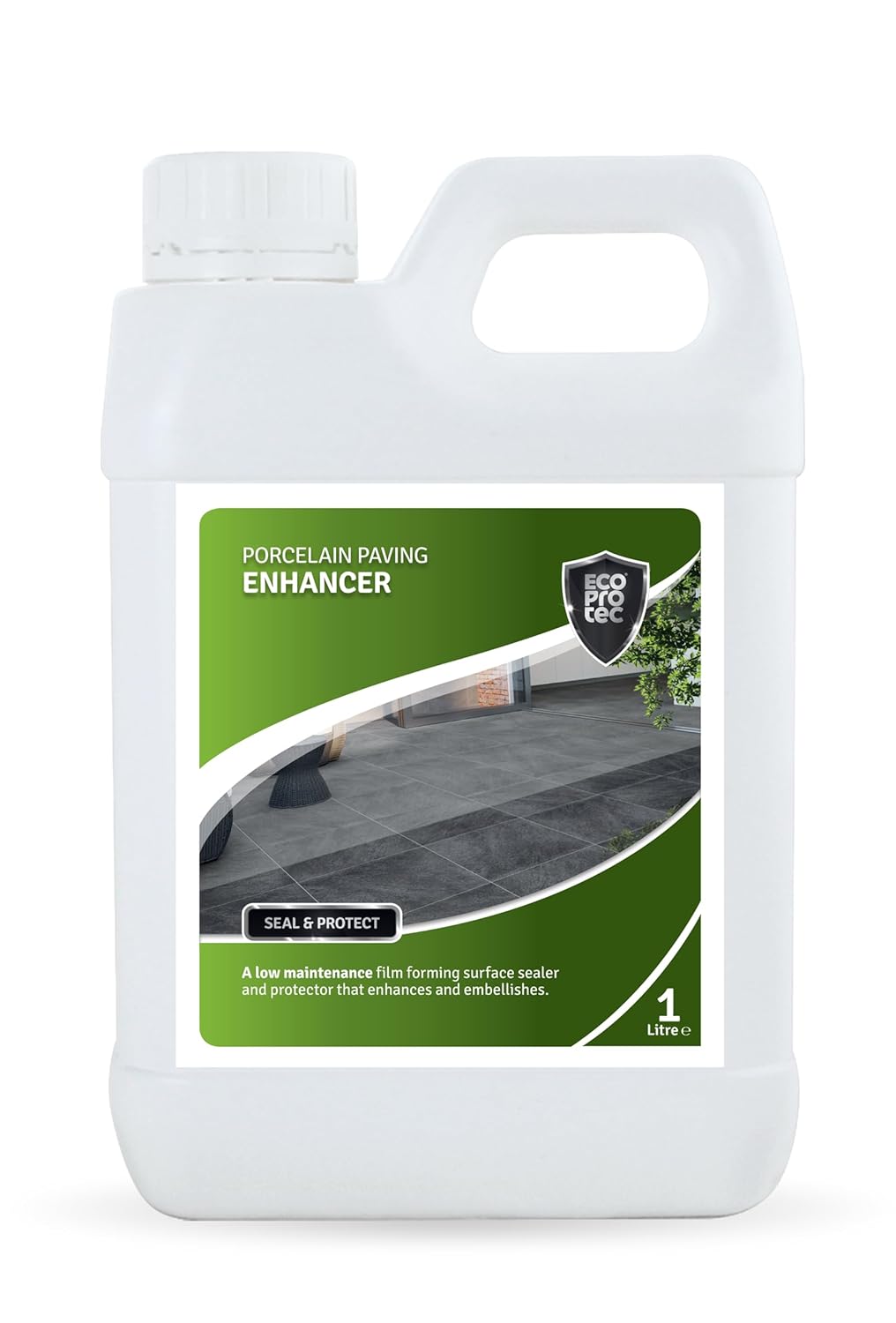
EcoProtect
Porcelain Tile Sealer
|
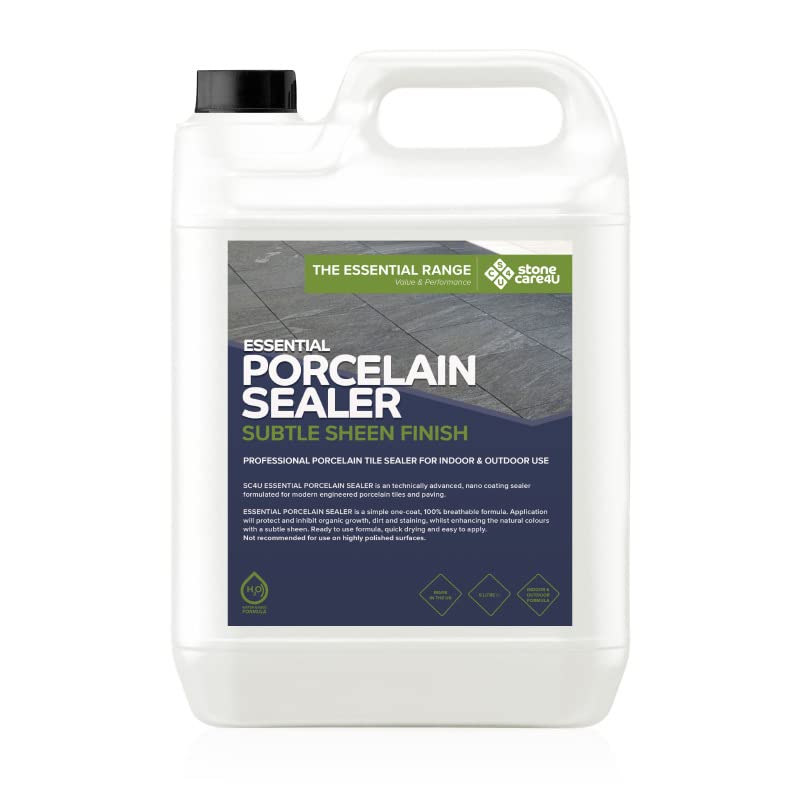
Stonecare4U
Essential Porcelain Sealer
|
Topical sealers function differently; they adhere to the surface of the porcelain tiles by creating a thin protective film rather than penetrating the material. Due to the dense and non-porous nature of porcelain, standard sealers designed for porous materials do not bond effectively. Consequently, topical sealers formulated specifically for porcelain are equipped with adhesion promoters that enhance bonding with the tile's smooth, glossy surface, ensuring comprehensive protection against potential damage.
-
Typically, topical sealers are available as either solvent-based or petroleum-based products, as these types bond more effectively to low-porosity surfaces such as porcelain. However, given environmental considerations, water-based sealers are emerging as viable alternatives, providing a balance between effectiveness and eco-friendliness.
-
The primary mechanism of adhesion is through mechanical bonding via the formation of a surface film, rather than absorption into the material's pores, making surface preparation vital for optimal performance.
-
To achieve optimal adhesion, it is essential that the tile surface is meticulously cleaned, dried, and free from any debris or residues prior to the application of the sealer, as this ensures a stronger bond.
-
Following the application of the sealer—typically achieved through spraying or wiping—it is crucial to allow it to cure properly. Skipping this step may lead to the film peeling or failing to adhere effectively, resulting in compromised protection.
-
Regular maintenance is imperative, as the topical layer may wear away over time, necessitating reapplication to maintain effective protection.
If a topical sealer is not specifically designed for porcelain, or if application instructions are not adhered to closely (such as inadequate cleaning or curing), the sealer may struggle to adhere and could peel off prematurely. It is always wise to consult the manufacturer's guidelines to achieve the best results and ensure the longevity of your porcelain surfaces.
The Critical Role of Sealers in Preserving Porcelain Quality Over Time
Employing sealers on porcelain surfaces transcends mere cosmetic enhancement; it represents a vital strategy in safeguarding the longevity and structural integrity of the material. While many manufacturers tout porcelain as non-porous, the reality is that tiles can exhibit micro-porosities stemming from inconsistent manufacturing processes—flaws that may remain undetected by the producers. These inherent vulnerabilities expose the tile to staining, moisture ingress, and long-term deterioration, making effective sealing all the more essential.
Utilising an impregnating (penetrating) sealer is recognised as best practice, as it delves into the tile to form an invisible barrier that obstructs contaminants and moisture without altering the finish. This is especially crucial in the UK's damp climate, particularly in older homes, to prevent discolouration and maintain both the tile's appearance and functionality. Furthermore, penetrating sealers enhance the natural beauty of the tile, making them an excellent selection for decorative applications where aesthetic quality is of utmost importance. Choosing the appropriate sealer not only ensures the preservation of your tiles but also guarantees that they perform optimally for many years ahead.
How to Recognise Signs of Sealer Wear and Degradation Effectively
Being able to recognise the need to strip or reapply a porcelain sealer is essential for maintaining the quality of your surfaces. Visual indicators such as discolouration or a dull appearance suggest that the sealer has lost its effectiveness. Additionally, if water fails to bead on the surface, this is a clear indication that the protective layer has been compromised and requires immediate attention to avoid further deterioration.
Since sealers are typically invisible, detecting wear and degradation can be challenging without performing a simple test. Tactile changes, such as a rough or sticky surface, may indicate that the sealer has degraded, yet these signs may not always be readily apparent. Homeowners should routinely assess their sealed porcelain by applying a few droplets of water onto the tile. If the water spreads and soaks in, it signifies that the sealer has worn away, indicating the need for reapplication. Conversely, if the droplets bead up, the protective layer is still intact and functioning effectively, providing assurance of ongoing protection.
Implementing Essential Safety Protocols When Stripping Porcelain Sealers
Prioritising safety is paramount when undertaking the task of stripping porcelain sealers. This process typically involves the use of chemical products that require careful handling and the implementation of appropriate protective measures to ensure a secure working environment.
Why Is Wearing Protective Gear Essential for Your Safety?
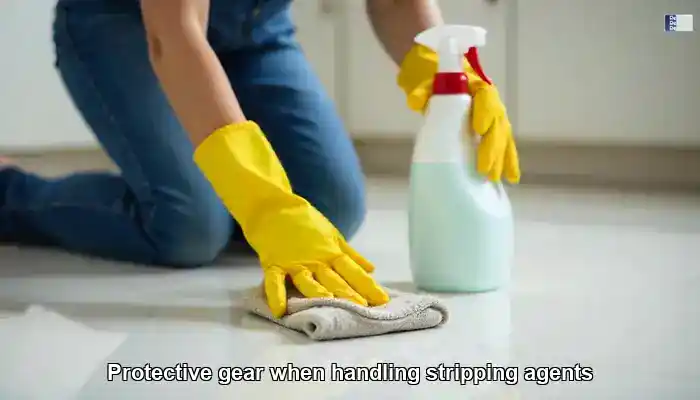
The use of appropriate protective gear is critical when dealing with sealers and stripping agents. Homeowners and professionals alike should wear gloves to safeguard their hands from potent chemicals that could induce skin irritation or allergic reactions. Safety goggles are indispensable for protecting the eyes from splashes and fumes that could lead to serious injuries, ensuring your vision remains intact throughout the process.
A well-fitted mask or respirator is also highly recommended to prevent the inhalation of harmful vapours. In the UK, where stringent legislation governs chemical handling, ensuring the proper use of protective equipment is vital not only for personal safety but also for adherence to health regulations. Always remember, prevention is always better than cure; investing in high-quality protective gear can save you from potential hazards and health risks that could arise during the stripping process.
Ensuring Sufficient Ventilation During the Stripping Process
Proper ventilation is critical when using chemical strippers, especially in enclosed spaces. The fumes emitted from these products can pose serious health risks, leading to respiratory issues or chemical exposure. Open windows and doors to create a cross-breeze, ensuring that fresh air circulates effectively throughout the area. In smaller spaces, employing fans to direct vapours outside can also enhance safety and improve air quality.
If feasible, it’s advisable to conduct stripping work outdoors or in well-ventilated garages or sheds. Although the UK's unpredictable weather may not always permit this, planning around ventilation can significantly enhance safety during the process. Always remain vigilant about air quality; if fumes become overwhelming, take a break and step outside until it is safe to return to the work area, ensuring your health and well-being are prioritised.
Key Guidelines for the Safe Handling of Chemicals
When dealing with chemical strippers, adhering to the manufacturer's guidelines is imperative for effectively mitigating risks. Always read the labels and instructions carefully, as they provide essential information on safe handling, including dilution ratios and specific applications. In the UK, there are regulations regarding the disposal of chemical waste, and following these guidelines is essential to protect both human health and the environment.
Furthermore, always store any chemical products in a secure location, out of reach of children and pets. Familiarise yourself with the correct disposal methods for unused products or residues; many local councils in the UK offer hazardous waste collection services to ensure safe disposal. By respecting these guidelines, you contribute to a safer environment while preserving your health and that of those around you.
Evaluating Chemical Strippers for Effective and Safe Sealer Removal
Chemical strippers are often the preferred method for removing porcelain sealers, but selecting and using them wisely is crucial to avoid unintended damage. Understanding the available types and their specific strengths and weaknesses can facilitate a smoother and safer stripping process, ensuring your porcelain surfaces remain intact.
What Should You Consider When Choosing the Right Chemical Stripper?
In the UK, you can find various formulations of chemical strippers:
- Solvent-based strippers are known for their rapid action and effectiveness in removing stubborn residues. However, they emit strong fumes and necessitate strict safety precautions, making them best suited for well-ventilated areas and professional use to minimise any potential hazards.
- Bio-based strippers, crafted from natural ingredients, are gentler on both users and the environment. While they are safer, they often require longer dwell times to achieve the desired results, making their application somewhat different from traditional chemical strippers.
- Water-based strippers offer a balanced option—low in toxicity and suitable for indoor use, particularly where air quality and user safety are priorities. This makes them an excellent choice for domestic settings.
Always confirm that the product is compatible with porcelain, as using incorrect formulations can compromise the tile's surface and lead to costly repairs.
Essential Tools for Effective Stripping of Porcelain Sealers
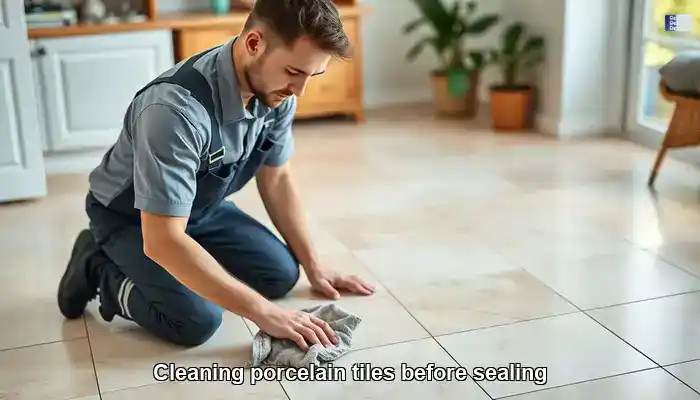
For most stripping projects, it is important to understand that impregnating sealer residues typically do not require complete removal, as they reside deep within the pores of the tile. Instead, the focus should be on thorough cleaning to ensure optimal performance. Utilise a high-quality alkaline cleaner to eliminate surface contaminants such as dirt, grease, and oil. This preparation ensures proper adhesion for any new sealer applied to the tiles and grout, without disturbing the embedded protective layer that remains effective.
Application Techniques for Chemical Strippers: Ensuring Effectiveness and Safety
When applying chemical strippers, a meticulous approach is essential to ensure both safety and effectiveness. Begin by preparing the area, moving any furniture or items that could be damaged during the process. Use a paintbrush or roller to apply the stripper evenly across the surface, ensuring a thick, uniform layer is created for optimal effectiveness.
Allow the chemical to sit for the recommended duration, usually specified on the product label. This waiting time is crucial as it permits the stripper to penetrate the sealer effectively. After the designated period, utilise a scraper to gently remove the dissolved sealer. Exercise caution to avoid scratching the porcelain surface; a plastic scraper is often the best choice for this task, preventing any potential damage while ensuring thorough removal.
Always refer to the specific guidelines provided for the chemical being used, as application techniques can vary significantly. Understanding the safest way to strip porcelain sealers not only ensures the task is completed successfully but also protects the integrity of your porcelain surfaces, safeguarding your investment in the long term.
Neutralisation and Cleanup After Stripping: Preparing for Re-Sealing
Once the stripping process is complete, it is crucial to neutralise any residues left behind to prepare the surface for re-sealing. Many chemical strippers necessitate neutralisation with water, while others may require specific neutralising agents. It is imperative to follow the product instructions carefully to achieve the best outcomes and facilitate a successful re-sealing process.
After neutralisation, clean the area thoroughly to eliminate all traces of the stripper. This step is vital, as any remaining chemicals can interfere with the application of new sealers. Use clean water and a mop or rag to wipe down the surface, ensuring it is free from dirt and chemical remnants. Proper cleanup guarantees that the newly sealed surface adheres well and performs optimally for years to come, preserving the beauty of your porcelain installations.
Utilising Mechanical Agitation Methods to Enhance Stripping Efficiency Safely
While chemical strippers are essential for removing porcelain sealers, mechanical agitation serves as a supportive method—particularly in amplifying the action of the chemical, rather than grinding down the tile surface. Given the dense, often glazed nature of porcelain, abrasive methods such as sandpaper, scrapers, or steel wool should be avoided, as they can cause irreversible damage to the surface and diminish the tile's overall aesthetic.
Implementing Safe Mechanical Agitation Techniques for Effective Results
Mechanical agitation should focus on enhancing the performance of chemical strippers, especially in textured areas and grout lines. The most effective methods include:
- Stiff bristle brushes for manual scrubbing of grout and textured zones, ensuring deep cleaning without harming the tile's surface.
- Red pads on a rotary floor machine for gentle agitation across larger areas, providing effective cleaning without risking damage to the porcelain tiles.
- Detail brushes or white pads for intricate edge work, allowing for precision cleaning without compromising the tile finish, ensuring a thorough and effective cleaning process.
These tools assist in breaking down sealer residues and embedded contaminants without damaging the tile. Always allow the chemical to dwell for the recommended time before initiating agitation. Rushing the process or overworking the surface may diminish effectiveness and increase the likelihood of errors, potentially leading to undesirable results.
Key Safety Considerations During Mechanical Agitation to Protect Your Health
Safety is paramount when utilising mechanical methods. Always wear eye protection to shield against debris and dust during the process, reducing the risk of injury. Gloves are also recommended to protect your hands from cuts or abrasions, ensuring a safer working environment that promotes efficient stripping.
Keeping a clean and organised workspace reduces the chances of accidents, so promptly clear away any dust or residue. Consider using a dust mask to prevent inhalation of fine particles, especially when sanding or working with materials that generate dust. Additionally, ensure that the porcelain surface is securely affixed to avoid any movement during the stripping process. Implementing these safety measures will not only protect you but also enhance the overall effectiveness of your work, resulting in a successful project.
Maintenance and Care of Tools After Stripping for Longevity
After completing a stripping job, it is essential to maintain your tools to ensure their longevity and optimal performance. Clean all abrasive tools thoroughly after use, removing any sealant residue that may have accumulated during the stripping process. Store them in a dry environment to prevent rust or degradation, particularly for metal scrapers and brushes that are essential for future projects.
Investing in high-quality tools can significantly impact the success of future projects. Regular inspections for wear and tear will help you determine when it’s time to replace your tools. Keeping your equipment in optimal condition ensures that you achieve the best results every time you work on a project, including mastering the safest way to strip porcelain sealers, ultimately preserving your porcelain surfaces for years to come.
Investigating Eco-Friendly Alternatives for Stripping Porcelain Sealers Sustainably
As awareness of environmental issues continues to rise, many individuals in the UK are actively seeking eco-friendly alternatives for stripping porcelain sealers. These options can be less harmful while still delivering effective results that align with sustainable practices.
Utilising Natural Strippers for a Greener Approach to Sealing
Natural strippers often incorporate plant-based ingredients to dismantle sealers without the harsh chemicals typically associated with traditional strippers. In the UK, products derived from citrus or soy have gained popularity. These alternatives are generally safer for both users and the environment, minimising harmful fumes and residues while still being effective.
Many natural strippers can also be employed indoors without the same concerns regarding toxic exposure as their chemical counterparts. However, it’s important to bear in mind that while they are less harmful, they may necessitate longer application times to achieve results comparable to those of stronger chemical strippers, requiring more patience during the application process.
Application Techniques for Natural Strippers: Ensuring Effectiveness
Applying natural strippers follows a process similar to traditional methods. Use a brush or roller to evenly cover the surface, allowing ample time for the product to penetrate and work effectively. It is vital to adhere to the manufacturer’s instructions concerning application time, as different products may vary significantly in efficacy and required exposure time.
Once the natural stripper has completed its task, use a soft cloth or scraper to remove the sealer, taking care not to damage the porcelain surface during this process. Rinse thoroughly with water to ensure all stripper residues are removed before allowing the surface to dry completely, preparing it adequately for re-sealing or further treatments.
Evaluating the Effectiveness and Limitations of Eco-Friendly Strippers
While eco-friendly methods offer a safer alternative, they can have limitations compared to traditional chemical strippers. For heavy-duty stripping tasks, natural products may not deliver the same speed or efficiency, necessitating additional effort and time to achieve the desired results.
However, for routine maintenance or lighter sealing applications, eco-friendly strippers can prove more than sufficient. They are particularly valuable for individuals conscious of their environmental footprint and seeking to minimise exposure to harsh chemicals in their homes. Understanding the safest way to strip porcelain sealers, with a focus on eco-friendly options, aligns perfectly with a sustainable lifestyle that prioritises both health and environmental responsibility.
Recognising When to Seek Professional Assistance for Stripping Porcelain Sealers
In certain circumstances, enlisting the help of professionals for stripping porcelain sealers may be the most prudent course of action. Knowing when to seek expert assistance can save time and prevent costly damage to your surfaces, ensuring a more efficient process.
When Should You Call in the Experts for Stripping Services?
There are specific scenarios where professional services for stripping porcelain sealers are advisable. If the porcelain surfaces are extensive or intricate, attempting to manage the task without adequate experience can lead to costly mistakes. Furthermore, if the previous sealing job involved multiple complex layers or particularly stubborn sealers, a professional’s expertise is invaluable in ensuring thorough and safe removal.
Additionally, if you are unfamiliar with handling chemicals or mechanical tools, the risks associated with improper usage can lead to significant damage or health issues. In such situations, seeking professional help alleviates concerns and guarantees a satisfactory outcome, ensuring that your porcelain surfaces are treated with the care they deserve.
How to Select the Right Service Provider for Your Needs
When choosing a professional service for stripping porcelain sealers in the UK, it is essential to seek reputable companies with established track records. Online reviews, testimonials, and recommendations from friends or family can provide invaluable insights into the quality of service provided. Ensure that the provider is appropriately licensed and insured, as this protects you from potential liabilities throughout the stripping process.
It is also wise to inquire about the methods and products they employ to ensure they align with your preferences, particularly if you are interested in eco-friendly options. A reputable service provider will be transparent about their processes and willing to address any questions you may have, ensuring your peace of mind throughout the project.
What to Anticipate from Professional Stripping Services
Engaging professionals for stripping porcelain sealers typically involves a structured process. Initially, they will assess the condition of the porcelain and the type of sealer that has been applied. This evaluation aids in determining the best approach for effective stripping, ensuring the right methods are employed for optimal results.
Once the assessment is complete, the professionals will prepare the area, protecting surrounding surfaces from dust and damage. They will then proceed with the stripping using their selected method, whether chemical or mechanical, ensuring safety and efficiency throughout the process. After completing the stripping, they will tidy the area and may provide recommendations for re-sealing or ongoing maintenance to preserve the quality of your porcelain.
Understanding the Costs Associated with Professional Stripping Services
Familiarising yourself with the costs associated with professional porcelain sealer stripping services in the UK is crucial for effective budgeting. Prices can vary considerably based on factors such as the size of the area, the type of sealer being removed, and the methods employed. On average, homeowners can anticipate paying between £100 and £300 for professional stripping services, contingent on these variables and the complexity of the job.
While this may appear costly initially, hiring professionals can ultimately save you money by preventing damage that could arise from DIY attempts. It is advisable to obtain quotes from multiple service providers to ensure you receive the best value for your investment, allowing you to make an informed decision.
Ensuring Compliance with Legal and Safety Standards for Stripping
It is crucial to ensure that the professional service you choose adheres to UK regulations and safety standards for stripping porcelain sealers. Reputable companies will comply with all relevant health and safety regulations, ensuring a secure working environment for both their employees and clients.
Do not hesitate to inquire about their safety protocols and environmental practices. A responsible service provider will prioritise safety and sustainability, aligning with your values and expectations. This commitment not only protects you during the stripping process but also contributes positively to the community and the environment by minimising potential hazards.
Essential Aftercare Steps Following the Stripping Process for Longevity
Once the stripping process is complete, it is essential to provide proper care for the porcelain surface to maintain its beauty and longevity. Following the correct procedures ensures that the freshly stripped surface is ready for re-sealing or further treatments, preserving the quality of your investment.
Thoroughly Cleaning the Surface After Stripping for Optimal Results
Cleaning the surface meticulously after stripping is vital to remove any remaining residues and ensure that the new sealant adheres appropriately. Start by rinsing the area with clean water to wash away lingering chemicals or dust. For stubborn residues, a soft cloth or non-abrasive sponge may be necessary to avoid scratching the porcelain’s delicate surface, ensuring a clean slate for re-sealing.
Once cleaned, allow the surface to dry completely before applying a new sealer. This step guarantees that no moisture is trapped beneath the sealant, which could lead to future issues such as mould or peeling. Regular maintenance and cleaning of stripped surfaces will keep them looking pristine for years to come, ensuring the longevity of your porcelain installations.
Frequently Asked Questions About Porcelain Sealers and Their Maintenance
What is the safest way to strip porcelain sealers?
The safest approach involves using protective gear, ensuring proper ventilation, and selecting suitable stripping methods, whether chemical or mechanical. Always follow the manufacturer’s instructions for the best results, ensuring a thorough and safe process.
How often should I strip and reapply porcelain sealers?
The frequency of stripping and reapplying porcelain sealers typically depends on the extent of wear and tear. Generally, inspecting surfaces every 1-3 years is recommended; however, it is also advisable to conduct regular checks for signs of wear to maintain their effectiveness.
Can I strip sealers myself, or should I hire a professional to do it?
This largely depends on your experience and the size of the area. DIY is suitable for smaller jobs, but professional assistance is advised for larger or more complex projects, ensuring a thorough and safe outcome.
What are the environmental impacts of chemical strippers?
Chemical strippers can release harmful fumes and pollutants into the environment. Eco-friendly alternatives are available that minimise environmental impact and exposure risks, aligning with sustainable practices.
How can I tell if my porcelain sealer needs stripping?
Indicators include discolouration, dullness, or the absence of water beading on the surface. These signs suggest that the sealer’s effectiveness has diminished, warranting prompt attention to preserve your porcelain.
Are eco-friendly strippers effective?
Yes, eco-friendly strippers can be effective, particularly for lighter applications. However, they may take longer than traditional chemical strippers for heavy-duty tasks, requiring patience and proper application techniques to achieve desired results.
What protective gear do I need for stripping sealers?
Essential protective gear includes gloves, safety goggles, and a mask to prevent inhalation of fumes and exposure to harsh chemicals, ensuring your safety during the process.
How should I dispose of chemical strippers?
Follow local regulations for the disposal of hazardous waste. Many councils in the UK provide collection services for the safe disposal of chemical products, ensuring environmental compliance and safety.
What maintenance is needed after stripping?
Post-stripping maintenance includes thoroughly cleaning the surface and ensuring it is properly dried before reapplying any new sealers, preserving the quality of your porcelain installations.
Can mechanical methods damage porcelain surfaces?
Yes, improper use of mechanical methods can cause damage to porcelain. Always employ appropriate tools and techniques to minimise the risk of scratches or chips, ensuring the integrity of the surface remains intact.
The article Porcelain Tile Nightmare: How to Strip Sealers Without Ruining Your Floor was first found on https://www.abbeyfloorcare.co.uk
The Article Stripping Sealers from Porcelain Tile Without Damage appeared first on https://fabritec.org
The Article Stripping Sealers from Porcelain Tile Safely and Effectively Was Found On https://limitsofstrategy.com

